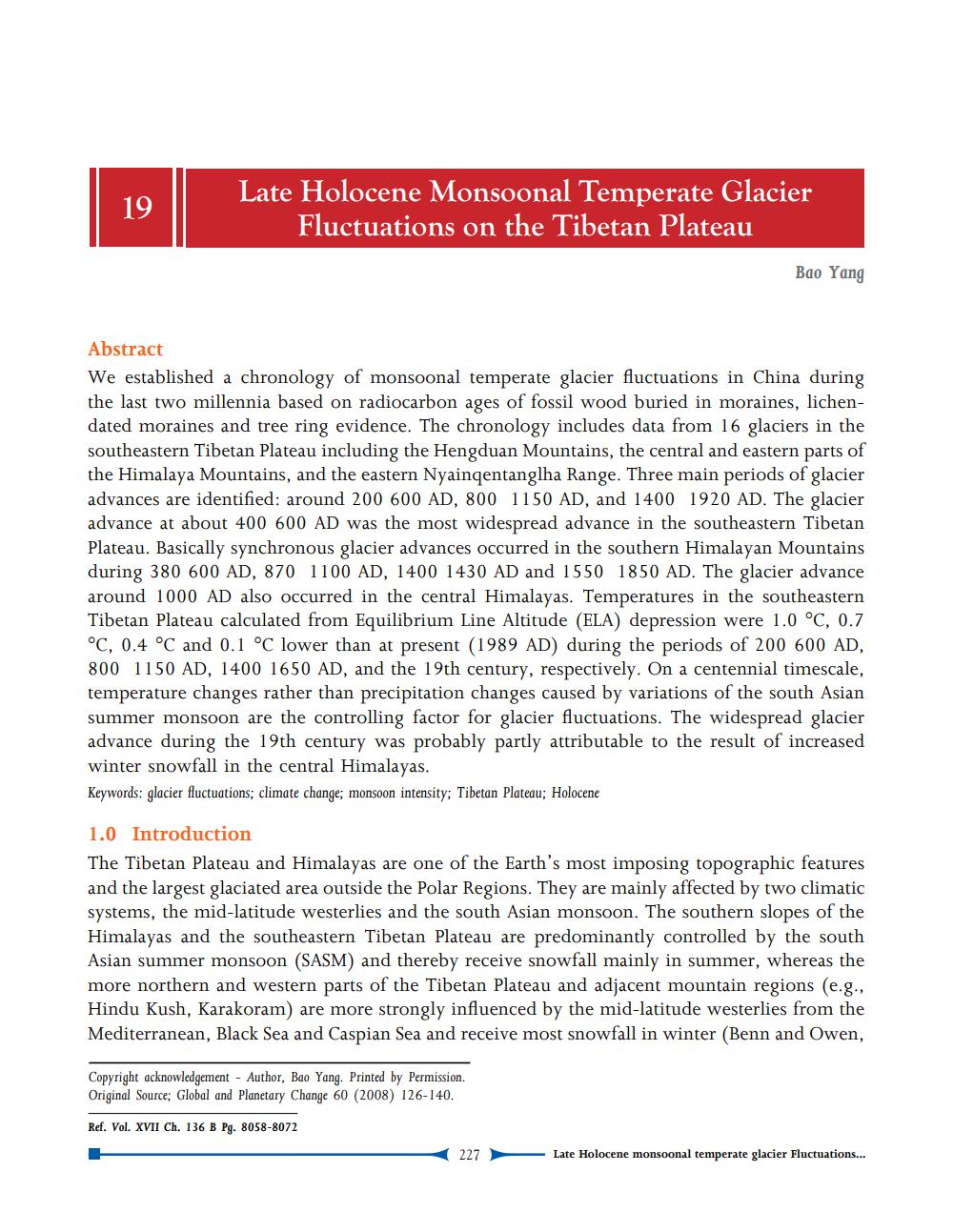________________
Late Holocene Monsoonal Temperate Glacier
Fluctuations on the Tibetan Plateau
Bao Yang
Abstract We established a chronology of monsoonal temperate glacier fluctuations in China during the last two millennia based on radiocarbon ages of fossil wood buried in moraines, lichendated moraines and tree ring evidence. The chronology includes data from 16 glaciers in the southeastern Tibetan Plateau including the Hengduan Mountains, the central and eastern parts of the Himalaya Mountains, and the eastern Nyainqentanglha Range. Three main periods of glacier advances are identified: around 200 600 AD, 800 1150 AD, and 1400 1920 AD. The glacier advance at about 400 600 AD was the most widespread advance in the southeastern Tibetan Plateau. Basically synchronous glacier advances occurred in the southern Himalayan Mountains during 380 600 AD, 870 1100 AD, 1400 1430 AD and 1550 1850 AD. The glacier advance around 1000 AD also occurred in the central Himalayas. Temperatures in the southeastern Tibetan Plateau calculated from Equilibrium Line Altitude (ELA) depression were 1.0 °C, 0.7 °C, 0.4 °C and 0.1 °C lower than at present (1989 AD) during the periods of 200 600 AD, 800 1150 AD, 1400 1650 AD, and the 19th century, respectively. On a centennial timescale, temperature changes rather than precipitation changes caused by variations of the south Asian summer monsoon are the controlling factor for glacier fluctuations. The widespread glacier advance during the 19th century was probably partly attributable to the result of increased winter snowfall in the central Himalayas. Keywords: glacier fluctuations; climate change; monsoon intensity; Tibetan Plateau; Holocene
1.0 Introduction The Tibetan Plateau and Himalayas are one of the Earth's most imposing topographic features and the largest glaciated area outside the Polar Regions. They are mainly affected by two climatic systems, the mid-latitude westerlies and the south Asian monsoon. The southern slopes of the Himalayas and the southeastern Tibetan Plateau are predominantly controlled by the south Asian summer monsoon (SASM) and thereby receive snowfall mainly in summer, whereas the more northern and western parts of the Tibetan Plateau and adjacent mountain regions (e.g., Hindu Kush, Karakoram) are more strongly influenced by the mid-latitude westerlies from the Mediterranean, Black Sea and Caspian Sea and receive most snowfall in winter (Benn and Owen,
Copyright acknowledgement - Author, Bao Yang. Printed by Permission. Original Source: Global and Planetary Change 60 (2008) 126-140.
Ref. Vol. XVII Ch. 136 B Pg. 8058-8072
227
Late Holocene monsoonal temperate glacier Fluctuations...




